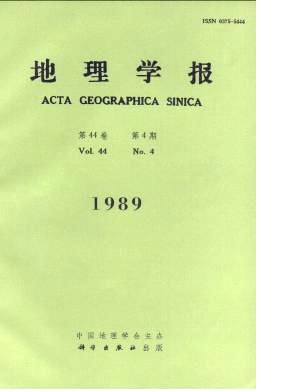Fan Jie
In 1982 Prof. Li Wenyan, deputy-director of Institute of Geography, Chinese Academyof Sciences, pointed out that Changzhi-Jiaozuo Region is suitabale for the construction of ter-ritorial industry complex. It took us nearly three years to make investigation, research andplanning in this region. This thesis is the generalization and summation of this work.It is based on the foundation of systematic analysis and comprehensive balance of basicconditions, such as coal, water resources, geographical position, transportation. Territorial com-bination of natural resources etc. within Changzhi-Jiaozuo Region to regard coal (mining andwashing), power (thermal power), metallurgical (aluminium and ferroalloy). chemcal (coal-chemical) and building material (cement) industries as the strategic goal of Changzhi-JiaozuoTerritorial Industry Complex. Because of the importance of water and transportation, com-munication (railway, road and pipeline) and water conservancy project are also included in-the complex. The inner-structure of this complex is determined by the utilization of the in-out put control model-he model of quantitative relationship among projects of key enter-prises, specialized industry departments and comprehensive economic development. Also theoverall planning program of the complex in aspect of time arrangement and space organiza-tion is outlined.Among the complex, coal, water and transportation are three key factors. (1) In this regioncoal is not only in great reserves and high quality, but also very easily mining. Comprehensivetech-economical demonstration of conditions of construction and production within 82 coalmines has shown that coal industry in Changzhi has the best mining condition in China. There-fore it’s necessary to exploit coal reserves here in broad scale. The output of coal could reach100 million ton per year. Among it 2/3 is made up by anthracite which will take an importantpart in anthracite production and circulation of China. Coal industry is a Core department inthis region. (2) Water condition is a constraint for the complex to develop other industrial sec-tors focusing on coal processing and utilization. Because of the rich water resource and specialgeographical position, adjacent to the high-developed region in short of energy, constructionof power industry should be sped up. The total capacity of thermal power would be about ninemillion kilowatt. (3) Based on the rational allocation of production, conventional and specialmeans of transport, coal and electricity transmission should be coordinated to perfect trans-port network and flow of commodities of the complex. The freight volume of coal could berisen gradually to 52 million ton per year (railway: 37, road 5, pipeline: 10 million ton). More-than 6 million kilowatt of thermal power would be transmitted to other regions. In this waythe complex will undertake the function of energy base according to the regional division ofproduction in China.In addition, considering the characteristics of the territorial combination of natural resourceswithin the region and allocation of resources from other regions, metallurgical industry, coal-chemical industry and building materials industry can be developed properly so as to raise theeconomical, social and ecological benefit.Space-time organization of the complex refers to the characteristics and rule of the presentsituation and historical developing process. After the study of historical development andpresent types of economic structure in this region, the former is shown in the way of regressionanalysis and the latter are divided with the method of Eij——quantitative theory, the com-plex can be divided into four districts, i.e. "Changzhi City", "Jinyong Town", "Mouth of Qin-Dan River" and "Jiaozuo City".
